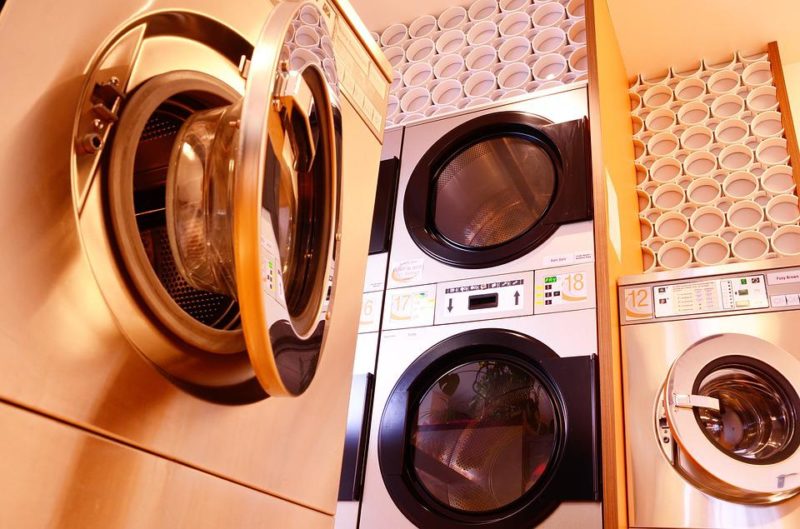This guide will help you to find out how to fix unbalanced washer? Washers must be balanced to function effectively. If your washer is unbalanced, it will most likely not spin or wash as effectively as it does.
An unbalanced washer will frequently generate a problem, causing the washing cycle to be disrupted and sometimes rendering the washer useless until it is adjusted. So when the washer is unbalanced, drainage and leakage problems are more likely to arise.
A washer that has become unbalanced may begin to vibrate abnormally. Vibrations may create causalities rapidly; therefore, it’s an issue that must be addressed right once. Redistributing the weight can typically solve the problem; a heavy-weight object in a low load might cause the drum to become unbalanced. If it doesn’t work, it might be possible to identify and repair the issue without disassembling anything. Fortunately, balancing a washer is typically relatively simple.
Steps To Fix Unbalanced Washer
During the spin cycle, a washer out of balance creates a lot of sounds. Furthermore, unbalanced loads might cause the equipment to break down; that’s why you need to understand how to fix unbalanced washer:
Step #1. Increase or decrease the laundry in the machine
It is critical to ensure that the clothing is adequately balanced in the drum while loading the washer. When using a top-load washer, ensure the clothing is uniformly distributed over the agitator. Many washers will enable you to halt the operation and redistribute the load if the machine gets unbalanced during a cycle. Tips for balancing the load: This can function in the opposite direction if the washing load is unbalanced.
When the washer gets unbalanced, adding and removing a few items usually solves the problem. Consider using a clothes washer bag to wash goods with threads or ribbons that might quickly become tangled in the wash. Ensure you’re using the proper cycles or setting for the load you’re undertaking. Setting the washer to a “regular” process while washing a heavy load of sheets may cause the machine to become unbalanced.
Step #2. Examine the floor
To function correctly, washing machines must be placed on a flat surface. A washer resting on a rough surface is prone to problems, including error messages and the inability to spin-dry the clothing effectively. If the washer is sitting on an unbalanced floor, its legs will have to be adjusted, or a strip of carpeting will be placed beneath the washing machine to stabilize it. Another alternative is to place elastic vibration absorbers beneath the washers to help balance them and prevent shaking while it’s running. You may also be interested to know about common problems with washing machine.
Step #3. The washer’s feet should be adjusted
A bubble level must be utilized to ensure that the washer is level. You’ll be capable of seeing whether the washer’s feet have to be set when you’ve selected the level on top of it. You should also ensure that the washer is leveled from front to rear after confirming its level from left to right.
The washer’s feet may be adjusted if the washer is unbalanced. Depending on the model, the back feet of certain washers adjust themselves whenever the front feet are balanced. A locking nut on the washer’s feet will most likely have to be removed with a tool before your fingertips can balance the dryer feet. Rust is at blame if a locking nut appears to be stuck. Rust is generally removed by pounding the locking nut using a screwdriver.
Turning the leveling leg counter-clockwise on most washers will lengthen the leg and elevate the washer’s corner. The leg will be reduced as you rotate it clockwise, bringing the washers nearer to the ground. Use the screwdriver to secure the locking nuts that keep the feet in position once you’ve set the feet to balance the washer. Having someone around you is frequently beneficial.
Step #4. Shock absorbers
Shock Absorbers The washer might become unbalanced if a shock absorber wears out. Shock absorbers are found between the washer’s exterior tub and base frame. If you see a shock absorber also isn’t attached to it from both ends or is seeping water, it should be changed or adjusted as soon as possible.
Step #5. Driver ball bearings
Between the tub spindle and the motor shaft, front-load washers commonly feature driver ball bearings that stabilize the washer. The driving bearings may have to be changed as they wear out. Ball-bearing replacement is a challenging task that will almost certainly need the help of others.
Step #6. Springs for suspension
Both top-load and front-load washers employ suspension springs to decrease noise and maintain proper operation. The washer might become unbalanced if the suspension springs get slack or worn out. Suspension springs can be found below the tub or even over, holding the tub in place above the foundation. You may well be able to adjust a slack spring, but it will almost certainly have to be repaired.
It’s A Wrap!
We hope that reading this article is just fun for you, and after reading it, you all will learn how to fix unbalanced washer. If your washer is unbalanced, never ignore this! Because it may damage your washer and reduce its efficiency. Read the article carefully so that you can stabilize your washer. Thank you, friends, for being with us at the end! You may also want to read about how to level a washer and when to put fabric softener in washer.

